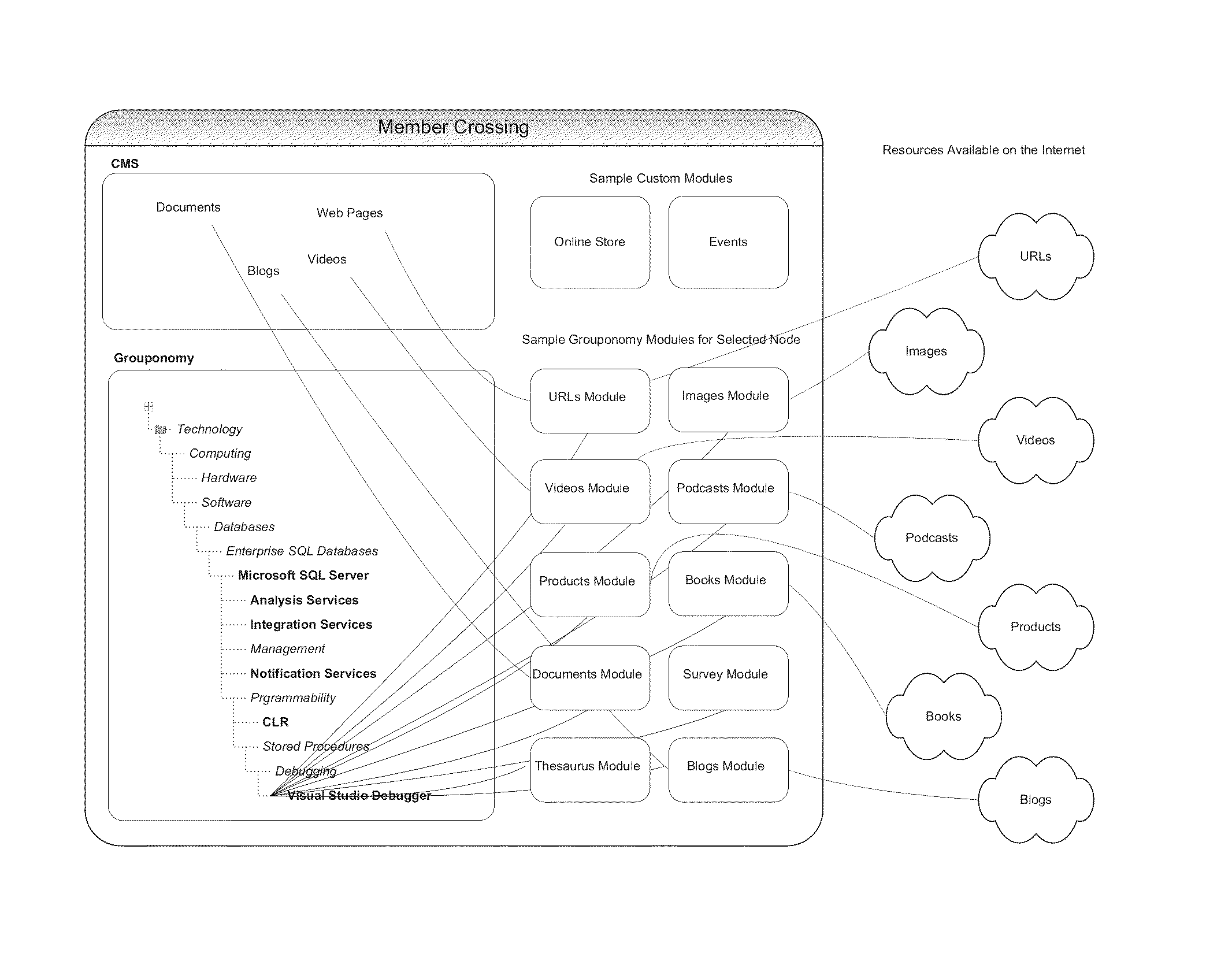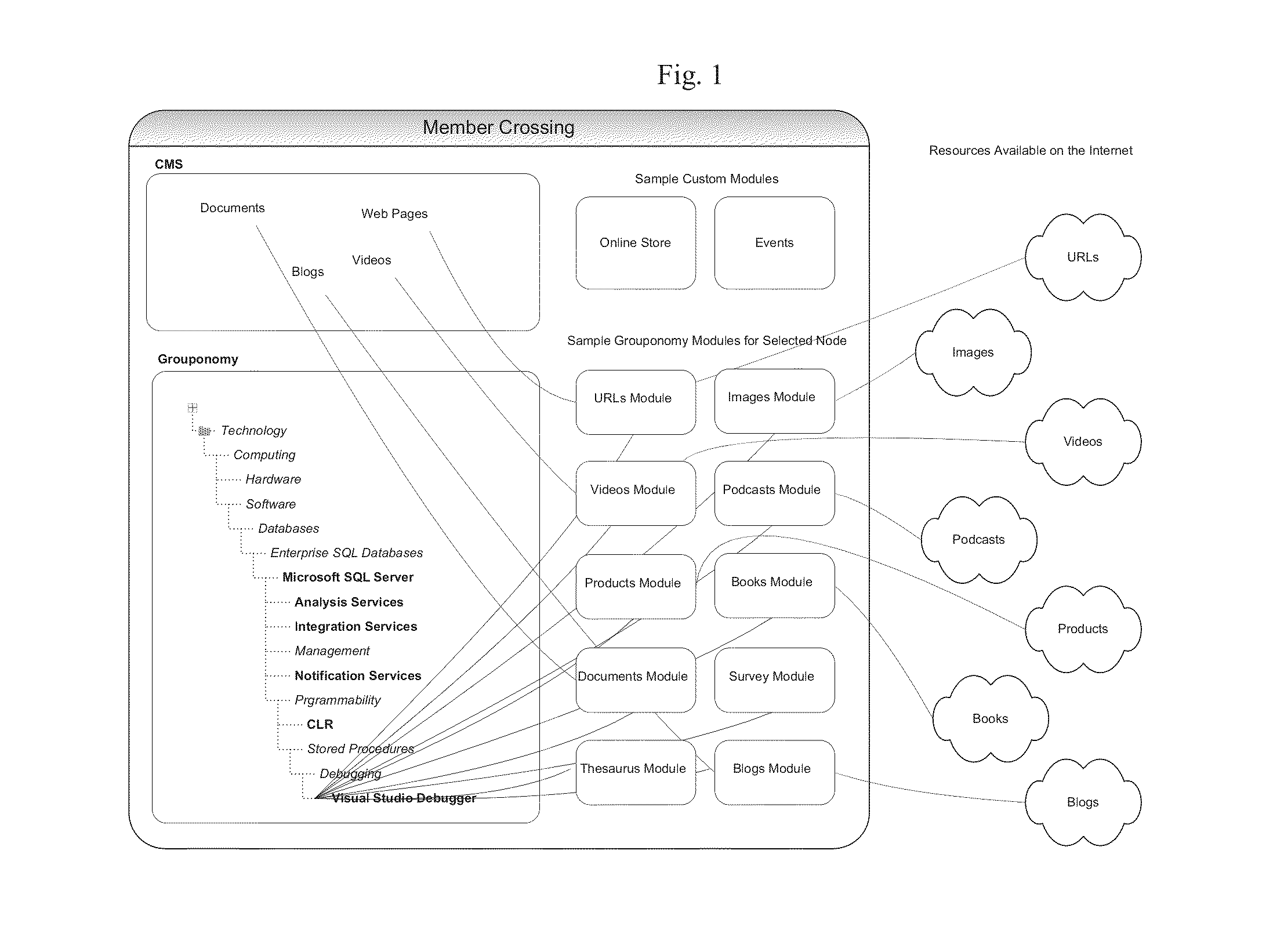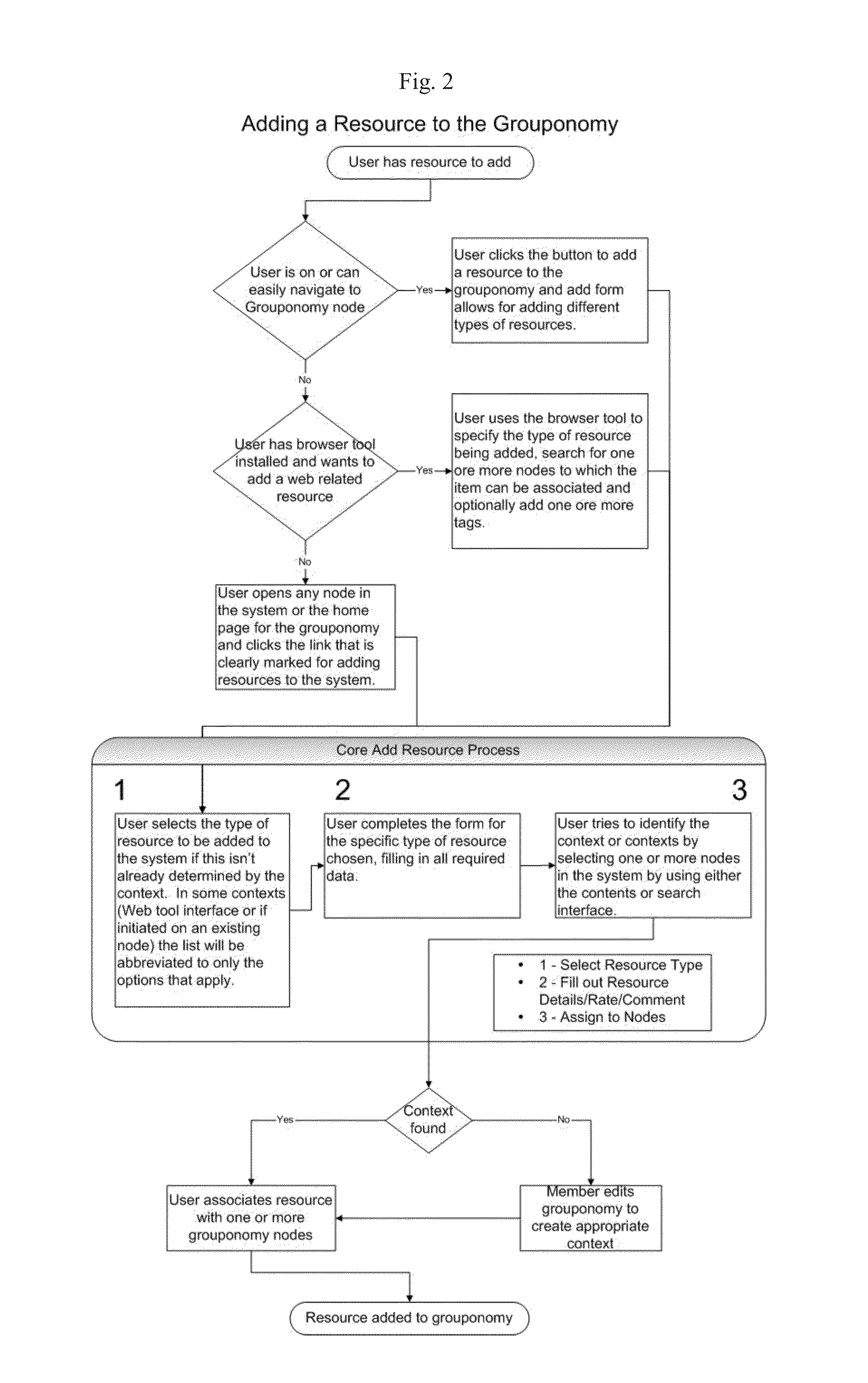A summary of some of the limitations of related art includes.Organizations excel based on their ability to share knowledge in their communities.Social-networking tools, while powerful, create disconnected data islandsThe tools don't scale well.
As the knowledge
pool increases,
usability decreases.Social networking has been limited to blogs, wikis, forums and bookmarks.
Community knowledge is often missing its context.
Semantic web solutions to this problem are too complex.Public
social media is often too varied in focusKnowledge is changing too rapidly for older systems to keep up
Increasingly, organizations are using the web to facilitate this kind of
community; and, while there are a number of exciting tools and technologies available such as blogs, wikis and forums, these tools are often implemented in an uncoordinated fashion.
Although some organizations have been quick to make use of the new
social media tools, they often quickly find that the amount of data entered into the
community repositories grows exponentially and quickly becomes difficult to manage.
This leads to a situation where
usability decreases in
spite of the fact that the amount of useful information in the
system is increasing.
It's just too hard to find information when the
data store gets too large.
Some of this data is currently shared in a community using expensive
third party software, such as job boards or community survey solutions, but in many cases the
software used to manage jobs or surveys does not lend itself well to community ownership of the data.
Finally, while the use of tagging systems which are so prevalent in Web 2.0
software have helped to provide a way to quickly and easily classify community knowledge, these systems often lack the precision needed when sharing information within an organization.
The use of =different terms by different members to tag content may leave valuable information hidden.
The use of these systems also does not help to propagate a common language for use in describing a specific domain of knowledge.
Moreover, the current efforts to solve the problem related to the problem of missing context are too complex and too burdensome for the enterprise to be of any value.
While we believe that the need for context related to enterprise data is high, we believe the overhead of the current approaches recommended by proponents of the
semantic web may be too high for the enterprise.
While the
semantic web and other similar approaches do increase the discoverability of enterprise data, the cost of doing so is often jokingly estimated at being higher than the cost of boiling the ocean.
One issue that everyone who uses social media sites today faces is the fact that these sites are often used by people from a variety of backgrounds.
In the end, the
signal to
noise ratio is too high to trust the information.
Another issue that many organizations face today is the rapid pace of change inside of business domains.
As a result of this
delta in knowledge, current approaches to managing community data in an R. enterprise are often too rigid, or are associated too closely with organizational hierarchies or politics to allow an organization's members to find actionable intelligence when it is needed.
Adding some type of solution built on top of the
semantic web may only exacerbate this problem, since each entity in a given domain may require extensive
documentation regarding its properties as well as the relationships and the meaning of those relationships between said entity and other entities in the
system.
 Login to View More
Login to View More  Login to View More
Login to View More 


